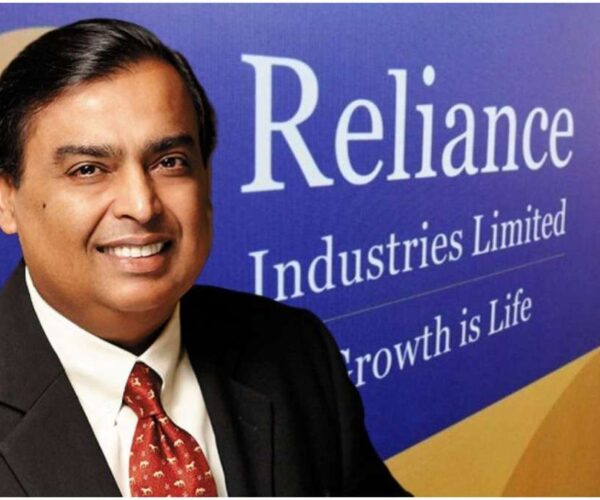Nimesh Desai is the Managing Director of TechEra , a company which operates in the aerospace sector. He closely tracks India’s defense, aerospace, and MSME sectors. In this special column he explains what ails the growing Indian aerospace industry.
India’s defense and aviation sectors are witnessing unprecedented momentum, driven by the central government’s aggressive push toward self-reliance under the Atmanirbhar Bharat initiative. From substantial investments in indigenous fighter jets and drones to policy reforms encouraging global OEMs (Original Equipment Manufacturers) to “Make in India”, the government is clearly laying the groundwork to position India as a global hub for aerospace and defense manufacturing. However, beneath this bullish narrative lies a critical challenge — the glaring shortage of skilled manpower tailored to the specialized needs of this high-precision industry.
The Challenge of High-Skill Requirements in Aerospace
The aerospace and defense industry is not just another manufacturing vertical. It is a domain where precision, safety, reliability, and technological superiority are non-negotiable. Unlike the automobile or consumer electronics sectors, where mass production and speed are prioritized, aerospace engineering demands near-zero error margins, exhaustive quality control, and a deep understanding of aerodynamics, material science, avionics, and systems engineering.
This is precisely why, even today, only a handful of countries — and just three or four major corporations globally — dominate the aircraft manufacturing space. Airbus, Boeing, Embraer, and Bombardier are few names that carry the massive responsibility of keeping the world’s aviation industry airborne. If India is to aspire to manufacture complete aircraft, not just components or sub-assemblies, it must cultivate a workforce that meets these exacting standards — both in manufacturing and in after-sales support such as Maintenance, Repair, and Overhaul (MRO).
The Skills Mismatch: A Growing Concern
While India’s aviation industry is growing at a rapid pace, the availability of industry-ready skilled manpower has not kept up. This has created a significant mismatch between the expectations of global collaborators and the actual capabilities of Indian firms. Foreign companies, which have entered into partnerships hoping to leverage India’s vast talent pool, are often left underwhelmed by execution challenges on the ground. This gap puts India at risk. If we fail to capitalize on the current momentum in the sector, countries like Malaysia, Indonesia, Vietnam, Brazil, and even smaller players like Morocco could seize the opportunity and race ahead.
This creates a trust deficit and tarnishes the credibility of Indian entrepreneurs in the global aerospace ecosystem.
The seriousness of this gap becomes more evident in the sub-sector of MRO — an area where India has a natural cost advantage due to its labor pool. Yet, we have not been able to capture even a fraction of the global MRO market due to a lack of skilled aviation technicians and engineers. The potential is enormous, but without a parallel rise in high-quality training infrastructure, we risk squandering this opportunity.
Reimagining the Role of Education and Policy
One of the foundational steps needed is a radical overhaul of the education-to-employment pipeline for aerospace and aviation roles. While a few IITs and premier institutions offer aeronautical engineering courses, the intake is minuscule, and the curriculum often lacks alignment with practical industry demands. It is imperative for more colleges and universities across the country to introduce aeronautics and aerospace programs with rigorous, updated syllabi co-created with industry experts.
Additionally, government policy must pivot from slogans to strategy. Atmanirbhar Bharat, while inspiring, cannot become reality without a ground-up investment in human capital. The Ministry of Human Resource Development (now Ministry of Education) must collaborate with the Ministry of Civil Aviation, Ministry of Defence, and Ministry of Skill Development and Entrepreneurship to create an integrated national roadmap for aerospace skilling. This involves:
- Setting up specialized aerospace skill training institutes
- Creating certification programs for MRO technicians
- Facilitating industry-academia tie-ups
- Introducing simulation-based training and apprenticeship programs
- Providing incentives for MSMEs to become skill development centers
Empowering MSMEs: The Backbone of Indigenous Capability
Companies like TechEra Engineering (India) Pvt. Ltd., despite being categorized as MSMEs, are contributing significantly to India’s aerospace ambitions. These companies often work closely with DRDO labs, defense PSUs, and private aviation firms, yet they lack the financial muscle to invest heavily in training initiatives.
The government must recognize the strategic role of such MSMEs and provide targeted funding for skill-building initiatives. If TechEra and similar companies are empowered to train young engineers and technicians, the benefits will be twofold — enhancing employment and simultaneously addressing the skills mismatch haunting the sector.
Changing the Mindset: From Entitlement to Commitment
Another core issue lies in the attitude of the youth entering the aerospace domain. Many lack the patience, discipline, and commitment this industry demands. Aerospace is not a field for shortcuts; it is a profession built on diligence, long hours, and lifelong learning. The culture of instant gratification prevalent today clashes with the rigors of aviation engineering.
Educational institutions must work not only on imparting technical knowledge but also on cultivating the right mindset — one that values precision, accountability, and perseverance.
A Call to Action
India is at a crucial juncture in its journey toward becoming a global aerospace powerhouse. The government has played its part in opening doors, inviting foreign collaboration, and incentivizing local manufacturing. But now, the focus must urgently shift to skilling — building an army of engineers, designers, fabricators, and technicians who can match the world’s best.
This is not just about employment or economic growth. It is about national pride, strategic autonomy, and technological leadership. If India is to truly fly high in the skies of aerospace excellence, it must first build the human capital runway to take off.



